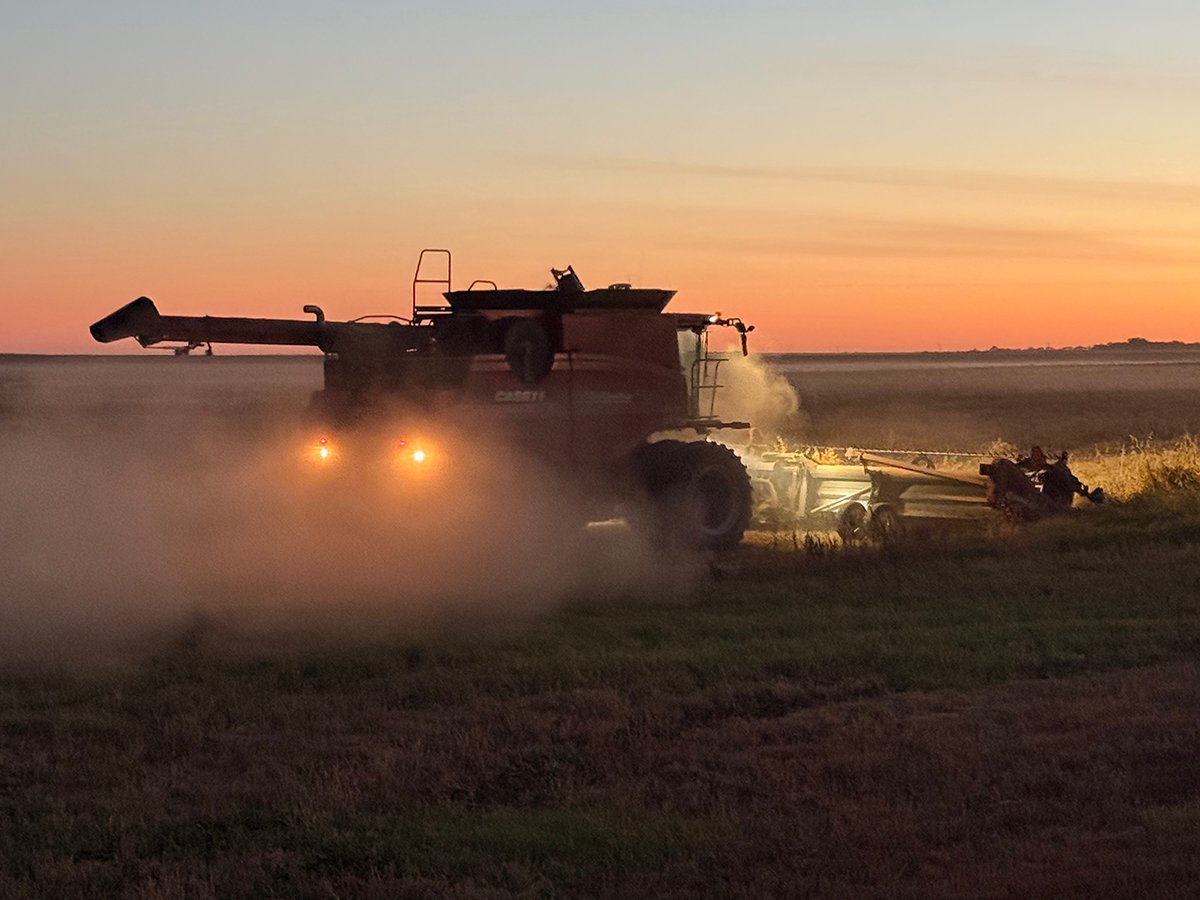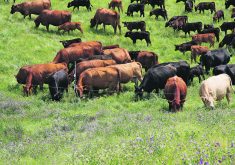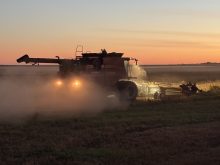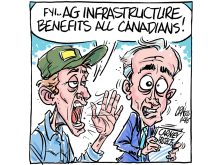Hopper cars
To the Editor:
Ownership of the federal hopper car fleet is just one piece of a complex grain transportation puzzle. The complete picture includes freight rates, performance guarantees and the day-to-day maintenance of this aging fleet. Producers must consider the facts behind this important issue:
In its 1995 budget, the federal government told the industry that it had neither the dollars nor intent to continue its involvement in grain transportation. Ottawa then asked an industry group, which included producer representation, to work out an ownership and allocation agreement.
Read Also

Downturn in grain farm economics threatens to be long term
We might look back at this fall as the turning point in grain farm economics — the point where making money became really difficult.
The industry group arrived at a compromise, which included extending the maximum freight rate cap for an additional five years and selling the hopper cars for $100 million. The reasonable sale price represented a direct benefit to producers who will ultimately pay for the fleet through freight rates – regardless of who owns the cars.
The most vocal opponents of the compromise have focused on the issue of car ownership – at the exclusion of bottom line issues like the 1999 transportation review and the five-year maximum rate cap extension. The railways originally agreed to these proposals, which were scrapped when the divisive debate over car ownership shelved the compromise.
The eventual owners of the cars will not have significant influence on the transportation system. Car allocation rules will be set by a separate body, freight rates will be determined by a government agency, and railways won’t necessarily manage their assets to maximize service to producers. These issues, not ownership, are where the Pool and producers must exert influence.
Transportation analysts have observed that some methods of car management (reapportionment between railways, for example) put forward by the producer-railcar coalition will detract from both system capacity and efficiency, costing farmers money.
Saskatchewan Wheat Pool has participated in the car negotiations with one approach in mind: The bottom line of producers is best served by creating the most efficient, low-cost system possible. The real protection for producers comes through the terms and conditions governing the use of rail cars, not their ownership.
At the annual meeting of Pool delegates in November, delegates passed a resolution directing the Pool to identify acceptable conditions to the federal government for the hopper car sale. Delegates added that if these conditions cannot be met, the Pool should pursue the assignment option.
Producers need to ask tough questions on this issue and make certain everyone is aware that grain transportation in a deregulated environment is a complex puzzle. To make the best decisions, we must look at the entire puzzle, not just one piece.
– Leroy Larsen, President, Saskatchewan Wheat Pool,
Regina, Sask.
Blame on birds
To the Editor:
Western farmers had increased problems during this crop year. Wet weather created bogs in grain fields. While struggling to harvest in the mud, the fall waterfowl flew in in greatly increased numbers destroying unharvested grain. Other farmers hosted herds of deer and elk.
Insurance adjusters were in demand estimating wildlife damage. Now crops are buried under snow awaiting spring and more loss will occur over winter.
Tax collectors will not smile when income tax forms register deficits; they can blame the birds.
– H. W. Jackson,
Falher, Alta.
Forage choices
To the Editor:
In your Nov. 7 issue an article entitled, Forage producers want payout too, included comments attributed to the Honorable Eric Upshall to the effect that Alberta is back to the old subsidy game and its so-called forage program is unfair.
I would like to set the record straight on the Alberta “forage” program and on the choices made by both Alberta and Saskatchewan on safety net programs.
The forage program is in fact the Canada-Alberta Arable Acres Supplementary Payment Program which will deliver $50 million of federal funds to make payment on arable acres in Alberta not eligible for the Western Grain Transition Payments Program.
These funds are carried over from safety net allocations made in 1995-96, but not expended in that year. …
Saskatchewan had a choice with regard to similar funds. Saskatchewan chose to use its unexpended federal carry-over in the enhancement of its Net Income Stabilization Account program and in its Crop Development Fund.
The simple fact is Alberta and Saskatchewan chose to address different needs with allocated funds and both choices were by agreement with the federal government and within the national framework of principles guiding national safety net policy.
In the application of this national principles framework and in the allocation of federal funds, Alberta has chosen to put in place programs that: Carry minimal trade countervail risks; do not distort farmer decision making on what to produce; address income shortfalls that occur for reasons beyond the control of farmers; provide for industry development.
This translates into long-term programs such as the Farm Income Disaster Program, Crop Insurance and the industry development funds. The federal government has chosen to continue with NISA.
For Alberta this package of programs is an effective use of funds. Saskatchewan has chosen to enhance NISA, revamp Crop Insurance, restructure its re-insurance deficit and have in place a crop sector program and industry development funds.
Both choices are allowable within the national principles framework and within the expenditure allocation agreements signed with the federal government. There is nothing unfair about the choices and, in the case of Alberta, they reflect the regional need for effective, targeted non-distorting support when farmers suffer income losses for reasons beyond their control.
– Walter Paszkowski,
Alberta Minister of Agriculture,
Edmonton, Alta.
Four pack wheat
To the Editor:
Re: Upgrade highways could spark competition in grain movement, (Nov. 14 issue). Where to and what kind of grain? Surely not wheat, as the grain elevators are fast disappearing even along the main line. Talk about competition.
Let’s look at the family car. I have seen the price rise from $2,200 to $22,000 and I see lots of competition even imports…..
There is no money in growing wheat if it has to be trucked hell knows where to find a grain elevator.
When wheat was a poor price of 20 cents a bushel, one could buy four packs of tobacco for a bushel of wheat.
You could not even buy one pack for a bushel of wheat today, with the so called high price or sky high price for grain.
– John Pokorney,
Tilley, Alta.
















